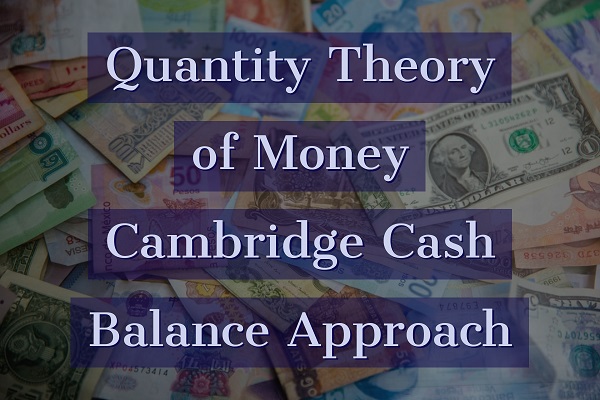Quantity Theory of Money – Cambridge Cash Balance Approach –
In cash balance approach to demand for money Cambridge economists, Marshall and Pigou, laid stress on the store of value function of money in contrast to the medium of exchange function of money emphasized in Fisher’s transactions approach to demand for money.
According to them, the value of money or the purchasing power of money is determined by the demand for and supply of money.
According to cash balance approach, the public likes to hold a proportion of their nominal income in the form of cash or ready money. This proportion of money that people want to hold in the form of cash or ready money is denoted by k.
Equation of cash balance approach –
Md = kPY
Md = the amount of money which people wants to hold
k = the proportion of nominal income that people wants to hold in the form of cash balances
P = price level
Y = real national income
PY = nominal nations income
The demand for money must be equal the supply of the money which is denoted by M, for the money market to be in equilibrium.
An important point to note is that the supply of money M is exogenously given and is determined by the monetary policies of the central bank of a country for the money market equilibrium.
So, M = Md
And, Md = kPY
So, M = kPY
k in the above equation is related to velocity of circulation of money V in Fisher’s transactions approach. So, when a greater proportion of nominal is held in the form of cash balances or ready money means when k is higher, V falls. On the contrary, when k is less, V rises.
According to Crowther, ‘The higher the proportion of their real incomes that people decide to keep in the form of cash balances, the lower will be the velocity of circulation and vice versa. It is because from above k = 1/V
from above equation,
P = M/kY
k is defined as quantity of money supply divided by the national income or M/PY
k = Quantity of Money Supply / National Income
k = M/PY
CONTINUE……..
